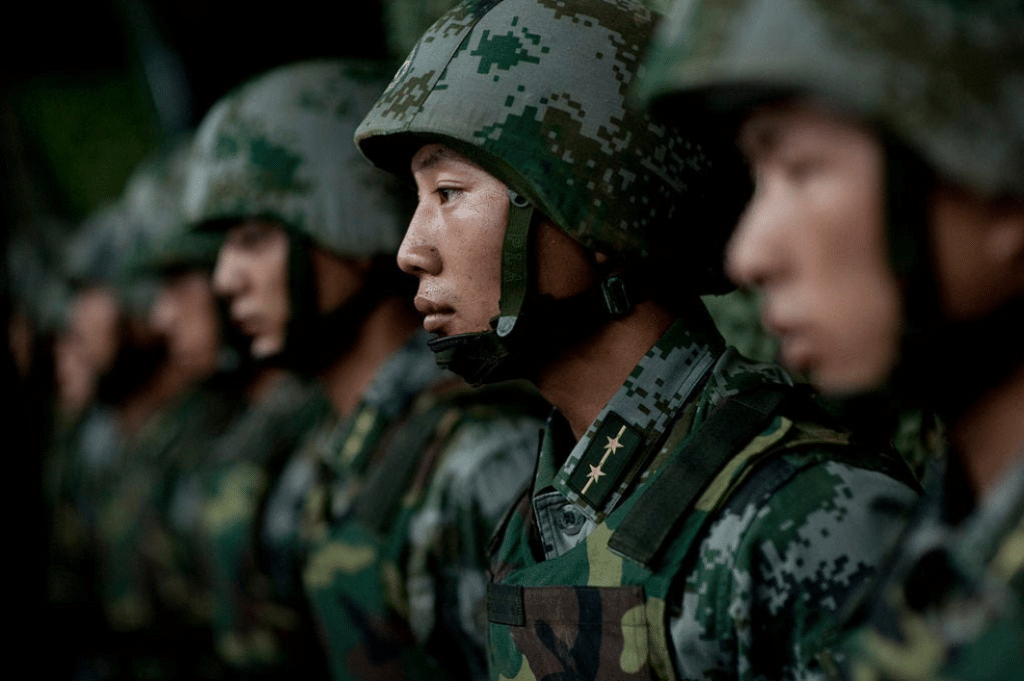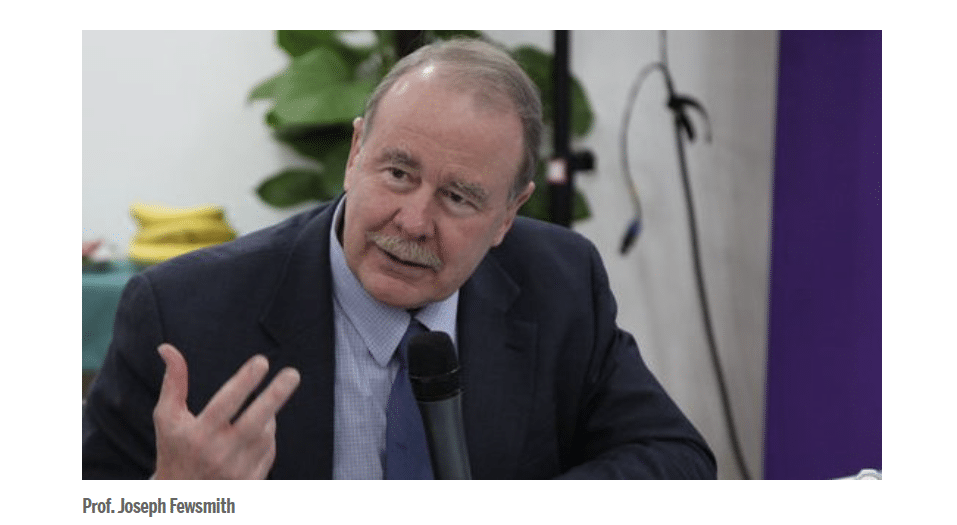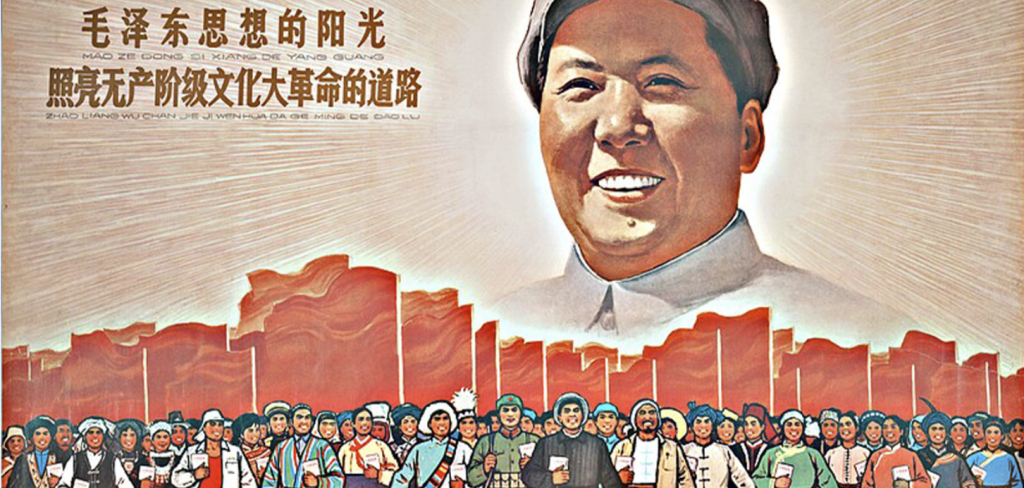Japan’s Prime Minister Takaichi Finally Says Something Close to What Beijing Wants to Hear
The International Efforts to Combat Myanmar’s Growing Humanitarian Crisis
Since its independence from Britain in 1948, Myanmar has struggled with military rule and internal conflicts. While a democratic transition began in 2011 with the appointment of President Thein Sein, the military, known as the Tatmadaw, continued to wield significant power and control. After suffering major losses in the 2020 elections, the Tatmadaw staged a coup in February 2021, declaring a yearlong state of emergency and cracking down on resistance. Recently, the military junta declared it will rule through August 2023. In the six months since the coup, Myanmar has fallen into a state of despair with a collapsed economy, rising violence, a failed health sector, and rampant COVID-19. How the international community takes action to stem the growing humanitarian crisis is critical to defining the public health of the Myanmar people for years to come.
A Brief History of Myanmar’s Internal Conflicts
After gaining independence from British colonial rule in 1948, Myanmar, known then as the Union of Burma, established a parliamentary democracy until 1962 when General U Ne Win led a military coup and established a military junta. Between 1962 and 2011, the country was ruled by the armed forces until Myanmar’s parliament appointed President Thein Sein in 2011 and officially dissolved the military government. In 2015, Myanmar held its first nationwide, multiparty elections. The main opposition party— the National League for Democracy (NLD) led by Aung San Suu Kyi— won Myanmar’s first free and fair elections in 25 years and represented a hopeful step forward in Myanmar’s transition into a fledgling democracy.
Myanmar has long suffered ethnic conflict and internal divisions. These divisions stem largely from ethnic discrimination ingrained in Myanmar’s political system. Ethnicity is a central component of citizenship and civilian rights. Under the 1982 Citizenship Law, only members of ethnic groups that lived in Myanmar before 1823 (prior to British occupation) are full citizens, rendering many lifelong residents and minority groups stateless. Many ethnic minority groups face discrimination and violence from the government and military. One ethnic minority, the Rohingya Muslim minority, has faced severe discrimination and repression in recent years. In 2017, Myanmar’s military, the Tatmadaw, targeted the Rohingya group in a brutal repression campaign in response to the rise of a Rohingya militant group called the Arakan Rohingya Salvation Army (ARSA). The Tatmadaw claimed they were carrying out a campaign to reinstate stability.
The 2021 Coup and its Aftermath
In March 2020, the NLD proposed an amendment to the 2008 constitution seeking to curb the political power of the Tatmadaw, and in the November 2020 election, Aung San Suu Kyi and the NLD won another victory and secured a second term in office. The military suffered a major loss in the elections, winning only 33 of 476 available seats in parliament. In February 2021, the Tatmadaw staged a coup, detained Aung San Suu Kyi, and announced General Min Aung Hlaing would take control over Myanmar during a yearlong state of emergency.
In the aftermath of the coup, tens of thousands of pro-democracy activists and civilians rallied in protest. One group, the Civil Disobedience Movement, composed of doctors and nurses throughout Myanmar, went on strike. Though the military junta initially showed restraint in response to the wave of protests, by the end of the first month of the coup, military crackdown escalated to lethal violence. According to the Assistance Association of Political Prisoners (AAPP), an independent non-profit organization founded by former Burmese political prisoners living in exile, as of August 11, 2021, at least 965 protesters have been killed. What began as a peaceful resistance to the coup has steadily morphed into violent altercations between the citizens and military government. Many protesters have moved away from peaceful protesting, and have taken to either arming themselves or joining one of the many insurgent groups within Myanmar. Ultimately, the people in Myanmar are preparing for a long, grueling stalemate with the military government.

Six months after the military coup in Myanmar, prospects for a peaceful resolution to the conflict remain bleak. In addition to escalated violence and repression, the humanitarian situation on the ground continues to worsen. A deteriorating economy, increased unemployment, poverty, and pandemic-fueled health concerns have exacerbated an already dire situation. The United Nations estimates 230,000 people have been displaced by the fighting this year and are in need of assistance. An already declining economy has all but collapsed in the aftermath of the coup.
While definitive projections remain hazy, Myanmar is undoubtedly suffering from economic contraction. The banking system is in dire straits as banks are on the verge of collapse, facing insolvency. Unemployment has skyrocketed, and Myanmar’s most important sector, agriculture, relies on the banking system for loans during the growing season. Foreign business has also contracted, further harming the country’s economy. On top of it all, Myanmar’s economy continues to suffer from the impact of COVID-19 and the lockdowns and restrictions of trade that resulted from the pandemic.
Most concerning of all is Myanmar’s growing COVID-19 health crisis. The health system has all but collapsed, both due to medical staff joining the civil disobedience movement and due to rising attacks on healthcare workers by the junta. More than 50 hospitals and health centers are occupied by the military, deterring many people from seeking vital medical care due to fears of violence and arrest. The military has also issued arrest warrants for 400 doctors and 180 nurses, charged with supporting and taking part in the “civil disobedience” movement. Mary Callahan, a professor at the University of Washington, provided a harrowing first hand account of the impact the pandemic has had on the ground in Myanmar, describing the devastation to the public health system, the shortage of vital supplies, and the desperate pleas for health assistance and an international humanitarian intervention. Lack of medical staff, shortages of essential equipment such as PPE and oxygen, and closures of medical facilities have resulted in a massive decline in public health that will plague Myanmar for years to come.
The pandemic continues to ravage the country as vaccinations remain low and infections high. One July estimate provided by public health experts in Myanmar predicts that 50% of Myanmar’s 55 million people will be infected within three weeks by either the Alpha or Delta variant of Covid-19. In an attempt to curb infections, the military junta declared a public holiday July 17-25, urging citizens to remain inside and only go out for essential activities.
International Response
The international community has displayed a wide range of responses to the military junta and their continued violence against the Myanmar people. Many countries, including the US, the UK, Canada, and Japan, condemned the coup and called for the release of detained officials. The United States, along with Canada and the UK, have imposed sanctions targeting individuals and entities tied to the military junta. Other countries, including many of Myanmar’s close neighbors such as China, India, and Singapore, expressed concern and encouraged dialogue.
International and regional organizations have also stepped up in response to the coup. Immediately following the coup, the United Nations Security Council held an emergency meeting to vote on a resolution urging the “restoration of democracy” in Myanmar, condemning the Myanmar military’s action, and calling for the release of detainees. The statement failed to earn enough support due to refusals by China and Russia. Ultimately, a consensus was reached in March, including China and Russia, and the UNSC released a “presidential statement” (a step below a “resolution.”), condemning the violence, prompting the release of the detained civilian government officials, and negotiating a peace settlement within the framework of the Myanmar Constitution. In June, the UN General Assembly passed a resolution 119 to 1 calling on member states to prevent the flow of arms into the country and strongly condemning the harsh crackdown on civilians and protesters. The negotiation of the resolution was facilitated by ASEAN member states, who have stepped up as the major international body facilitating the peace process in Myanmar.
In April, ASEAN held an emergency summit to address the ongoing crisis in Myanmar and established a five-point consensus on the Myanmar crisis. The consensus calls for an end to the violence, constructive dialogue to seek a peaceful solution, the establishment of a special envoy for mediation and visits, and commits ASEAN to providing humanitarian assistance. While this effort is an important step forward and has been praised by the international community, it has major shortcomings. First, despite its name, the five-point consensus was voted forward by only six ASEAN countries, while Brunei, Cambodia, Laos, and Thailand abstained. Second, ASEAN has been slow to implement its points since April, which has attracted criticism from other countries and human rights groups. Only last week did the regional body finally appoint a special envoy to Myanmar, Brunei’s second minister for foreign affairs, Erywan Yusof.
The Role of the International Community
Given the dire situation in Myanmar and the continued decline in public health especially due to COVID-19, the response and actions of the international community are instrumental to stemming the growing catastrophe on the ground. Tom Andrews, the UN Special Rapporteur on the situation of human rights in Myanmar, recently called for a COVID-19 ceasefire, stating, “Member States of the United Nations cannot afford to be complacent while the junta ruthlessly attacks medical personnel as COVID-19 spreads unchecked. They must act to end this violence so that doctors and nurses can provide life-saving care and international organizations can help deliver vaccinations and related medical care.” The rising humanitarian crisis in Myanmar should be the immediate concern for states and organizations.
Despite the urgency of the situation, providing humanitarian assistance continues to be an upward battle. Many international aid groups within Myanmar prior to the coup were forced to suspend operations as a result of Myanmar’s collapsed banking sector and the difficulty of transferring money into the country. The escalating situation and high levels of violence on the ground also impedes efforts. Given these difficulties, ASEAN lies in the best position to facilitate aid and humanitarian assistance to Myanmar through the AHA Center, an intergovernmental organization which facilitates cooperation and coordination between ASEAN, the UN, and other organizations for emergency and humanitarian responses.
The regional body outlined humanitarian aid and assistance in it’s five-point consensus, but has thus far stalled in implementing or outlining any plans. Nevertheless, the international community and international organizations such as the United Nations have generally come to the consensus that ASEAN centrality is needed for any hopes of progress in Myanmar. These endorsements should be accompanied by renewed pressure on ASEAN’s newly appointed special envoy to encourage cooperation and dialogue with Myanmar’s military junta and to outline a humanitarian assistance plan both to support the country’s failing health sector and efforts to control COVID-19. While ASEAN may lack a censuses on the peace and dialogue process, they all have vested interest in containing the spread of coronavirus and the variants now running rampant in Myanmar.

Additionally, the military junta would be more amicable toward accepting assistance from ASEAN on COVID-19 relief. In late July, General Min Aung Hlaing called for greater cooperation with the international community to contain the coronavirus, including with fellow members of ASEAN and “friendly countries.” Responding to this call for assistance does not necessarily have to mean enabling the military regime, rather ASEAN could capitalize on the situation to limit the issues of violence and access experienced by other aid projects.
The peace process in Myanmar will take years, maybe decades. Developing plans to promote constructive dialogue are needed by ASEAN, the UN and supporting states, but these efforts take time and are slowed by bureaucracy and negotiation. The humanitarian crisis in Myanmar cannot afford to wait for this slow pace. ASEAN, with the support of other organizations and states, must take the lead in establishing urgent humanitarian assistance to Myanmar, both for stemming COVID-19 and providing structure for basic health assistance and services.
Role of the United States and China
Individually, China and the United States have a responsibility to encourage dialogue and condemn violence, both through state actions such as sanctions and cooperation within regional and international bodies such as the United Nations. Together, there are opportunities for cooperation or at the very least collaboration in Myanmar. To this end, it is important to compartmentalize Myanmar from tensions between the U.S. and China. The two countries have areas of common interest including regional security, stability, and humanitarian assistance. Recent senior level talks in Tianjin, China between Deputy Secretary of State Wendy Sherman and Foreign Minister Wang Yi included discussions on Myanmar, with both sides expressing concerns on the escalating situation in Myanmar. In an interview with the Associated Press, Sherman stated, “I hope that we see those resolutions for the sake of many people whose lives and futures depend on it. But we will have to see.”
The biggest opportunity for U.S.-China cooperation is through multilateral organizations and other regional actors, not one-sided or bilateral intervention. ASEAN centrality is a fundamental policy stance of both the United States and China, and working with the regional organization along with member states bilaterally or multilaterally is a possible avenue for collaboration. However, regional efforts have faltered. As such, the U.S. and China should cooperate with ASEAN and its member countries to encourage a stronger regional response. Together they could build a shared understanding of the situation that would be instrumental in enhancing the efficacy of multilateral cooperation and humanitarian aid.The U.S. and China need to pressure ASEAN to implement its 5-point consensus, especially humanitarian aid. Jointly, they could establish vaccine and equipment donation efforts and provide external funding to the AHA Center.








